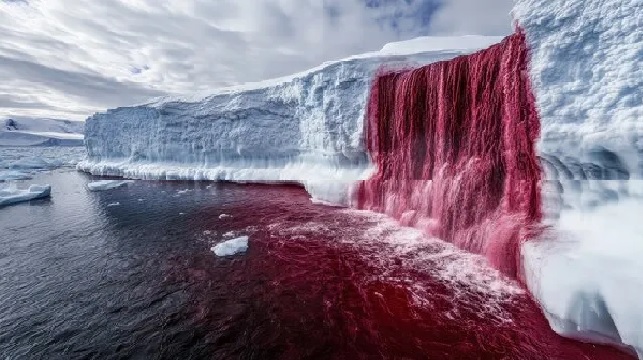Blood Falls: The mysterious secret behind Antarctica’s red waterfall, read to know more about it
Discover the fascinating science behind Blood Falls, Antarctica's mysterious red waterfall. Learn about its unique ecosystem and more
Imagine you are in a frozen landscape of Antarctica, only snow and ice all around you, and then you stumble on a waterfall that looks as red as blood! Sounds like some fantastical sci-fi flick, doesn’t it? But this is real life, folks! Blood Falls of Antarctica is one of the most astounding natural wonders on Earth.
How did such a weird waterfall exist? Well, it all began back in 1911, when Australian geologist Thomas Griffith Taylor was mapping the continent. He was the first person to witness the Blood Falls, but he had no idea what might be causing this water to become red. Scientists for years had believed that the cause might have been some form of red algae, but only until 2003 when they figure out the truth.
It happens that the reason for the color comes with iron oxide, which forms when salty water trapped beneath the Taylor Glacier meets oxygen in the air. But here’s the really cool part, this process is made possible by a community of tiny microorganisms that live beneath the glacier. These small ones manage to survive under conditions almost no other organism can, and they form the Blood Falls.
It almost immediately combines with freezing air when it nearly reaches the under-ice world to escape; that is when the chemical reaction begins to infuse the water with a reddish color, a sort of magic trick in nature. Best of all, Blood Falls is one of a plethora of the wondrous world in Antarctica. There is nothing but some frozen landscape over here, so full of weird and wonderful phenomena, and the scientists are constantly discovering new things.
Also Read: Ocean Warming Rate Accelerates By Four Times Than Last Four Decades, Says Study



